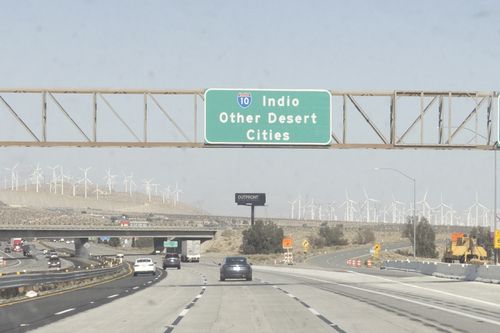
Big up Aidan Koch for doing this interview with the strange and cool Other Desert Radio, and taking all the photos. Thank you Aidan! Bonus hyperlink: Aidan is an artist that you should know, who lives in Landers, CA, with a bunch of animals.
-Andrew
As you drive east on Interstate 10 in a desperate attempt to get out of L.A., exit 117 appears about an hour and 45 minutes in. “Other Desert Cities,” it says, a gesture towards something different, something distinctly not Palm Springs, or Indio, or should you continue on, Phoenix.
“Other Desert Cities” is an entry point to what we call the Morongo Basin, a constellation of towns off Highway 62 more generally regarded as Joshua Tree. The density of artists, musicians, and weirdos there is astounding, even given the thousands of acres of land. I moved there three years ago, and was met with a community that inspired me.
When sound artists Caroline Partamian and Ethan Primason moved there in 2020 and decided to start an online radio station, with shows strictly by Other Desert residents, I was excited to hear what they could scrounge up. I was also excited to be part of it. (My show is called “Desert Dove.”)
In a reflective mood, Partamian and Primason spoke to me on their patio after a casual sunset walk with their dog Beverly. We talked about what they created with ODR, what’s to come for the station, and using radio to create and uplift community.
–Aidan Koch
All photos by Aidan Koch
--
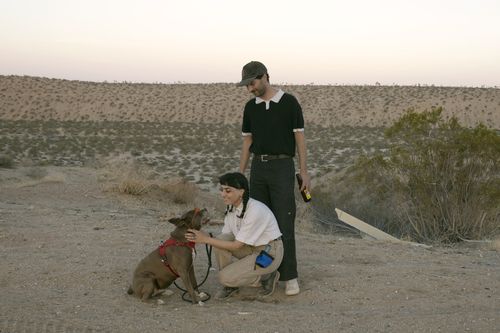
Aidan: Did you already have the radio in mind as you were spending more time out here or after you officially moved?
Ethan: We both had worked in radio previously. Myself in New York, Caroline in the Bay. Once we started collaborating together artistically we found transmission as common ground between how we explored creatively. That was something we incorporated into projects not necessarily with a radio station but using the language of transmission as a way to explore building community and politics and art. So that was definitely on our minds. And then when we started spending more time here and considering moving here and then moving here it was something we thought was needed. We got our house and didn’t have internet and were listening to radio and were just like…
Caroline: It was all top forty.
E: It was just really bad.
A: Just like only Z107.
E: Yeah exactly and it has its place. We weren’t trying to start an on-the-dial radio station but it reminded us why it’s important. And as we started meeting more people and realized how many really talented, interesting people were here, it seemed like something worthwhile to spend some of our time on.
C: We’d spent time here obviously, we’d met you, and we had been living here in the fall of 2019, but as soon as we permanently settled, lockdown happened. Being in this strange, unusual, and isolating time, we wanted to still be able to make things for one another, to make things safely, and be able to share things we were listening to or just thinking about.
E: And I feel like one of the things that always was really hammered into my head working at a radio station was being reliable and accountable to your listenership. That felt really huge at the beginning of the pandemic since there was so much uncertainty. We were like, “What can we do to check in with ourselves and other people like once a week?”
C: It was a huge way of getting through the pandemic for us.
E: It’s also still small and something that’s fun and not too serious except in regard to being reliable and consistent. That’s important to people and people respond to that and want to be a part of it which is really great.

A: I remember talking with you guys early on and knowing there were people submitting who you hadn’t met yet and people on there who hadn’t met each other. So the existence of it kind of showed people there’s other parts of the community that you might not even know about.
C: It’s cool because we still haven’t met many of the people who make shows, and dream of events where everyone can gather and meet and be like, “Oh you have that show,” or, “I’ve heard your show before.”
E: So much of the romantic idea of radio is the silent audience and the invisible audience. It’s a strange feeling if you’ve ever broadcast before or been sitting in front of a microphone and you see the LIVE button. It’s pretty abstract and scary. But there’s kind of this intimate thing where you know someone is listening out there, but you don’t know who it is or how they’re feeling about it. Taking that to a different level where you’re communicating with people who are creating content and shows for us to host when we’ve never met them is also this weird kind of cool. Like I’m excited to meet some of those people because I already feel like we have this connection with them
A: It’s special out here where we’re all really spatially far apart already. There’s so much distance between like Landers and Wonder Valley or Pioneertown and Twentynine Palms, but there’s also this feeling of connectivity about being part of the high desert community.
C: Other Desert Radio is really for amplifying the voices of people that live in the high desert or have a connection here but we have listeners elsewhere and we’re like, “Who are those people that are listening in Hungary or wherever?!”
E: It does feel like a bridge between the gaps geographically of this zone. We’re all sharing a similar experience here but are spread out and not seeing people as often as when we were living in a city. One way I think of it is that, “I can’t wait to see this person again because last time we talked they were starting classes or working on this project.” You know everyone is deep in their world which I think is usually an interesting one. It’s always exciting when we get new shows in and listen to everything because it’s like checking in with people.
A: And maybe a funny way to think of it too is everyone is living to their own soundtrack here, which feels especially relevant driving around this landscape. The desert really magnifies moods.
E: Which is funny because we both have really old cars and neither have ways to listen to music when we drive. I was thinking about that today while driving around. I kind of wished I was singing along to something or listening to something, but I also love just having the window down and not listening to anything.
C: Just listening to the wind. Sometimes I do try and turn on ODR from my phone, but it’s too windy with the window down so I put it up to my ear.
E: It’ll be a good day when we get stereos in our cars to listen to our radio station.
C: Otherwise it’s religious talk radio and Z107 and The Eagle… a lot of Tom Petty.
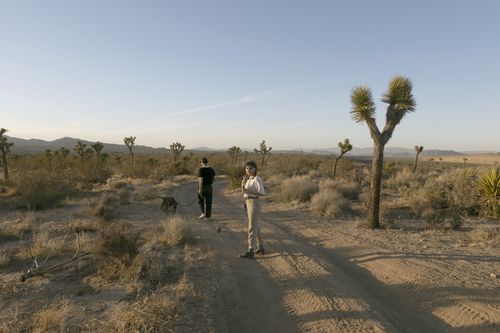
A: This area historically has a lot of live music shows and events. Do you see some live music/local music content coming in as we open up again?
E: I hope. Starting with taking control at a time when things felt really out of control, getting our feet planted and being like, “Send us playlists,” felt like a good way to start. But we have larger plans for community gatherings, sponsoring or putting on shows, and broadcasting events like Summer’s Eve festival. We want to try to facilitate or bear witness to that happening here. I hope we can go to shows and bring a mobile recorder and be like, “Do you guys want to archive this? And be on the radio?” That’s a lot of what I come from when I was doing radio stuff in New York.
C: That was one of my favorite things to do too when I worked at a community college radio station in Berkeley called KALX. They would call it “co-presenting” a show and the radio station would set up at a show and broadcast it. It created a comfortable layer around which to be able to talk about music, transmitting, and broadcasting it. I hope we get to do that at some point. We also dream about an Other Desert Radio DJ night that’s not on the radio but has the radio’s community attached to it.
E: From the beginning too, we didn’t want to be curators. We’ve never said no to someone who’s wanted to do a show as long as they live here, which has been the only guideline. With the intention of acting as a mirror for this place, if there’s a crazy weird live show that people want to submit or record or have us come record, we’re down to explore and have those interactions. That was always appealing to us with transmission as this very powerful forum for people, a kind of lateral, democratized thing, where everyone can access this world where your voice can get recorded and saved forever in this intentional way and you can have your words or your music or thoughts broadcast around the world. It's a really powerful idea and it doesn’t take that much to facilitate.
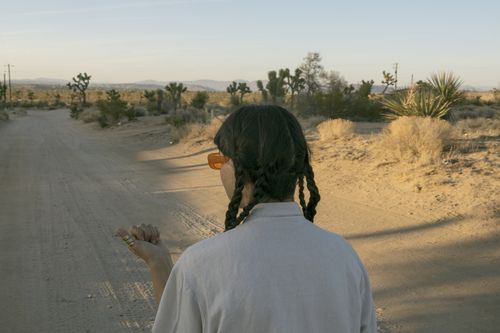
A: From your histories and present lives, what are some of your favorite radio stations?
C: I love Dublab BCN from Spain. It used to have the coolest most minimal look. Each DJ was a different shape that was painted on like watercolor. Their shows are super cool and weird. When we were in Austria at a residency a year and a half ago, I loved listening to the radio and not understanding the language. You could listen to someone talk for hours. I’d listen to a lecture and it would be a totally different experience. But just getting to listen to a DJ, the comfortable aspect of that, and then music every so often...it was just a way of bringing me to a space where I felt very at home. I also loved KALX where I worked when I was in college.
E: Growing up on the east coast I loved WFMU. I could pick it up in my car when I was a teenager driving around the suburbs of New York, accidentally tuning in and discovering crazy shows that you then mention to someone and they’re like, “It’s a treasure trove and it’s been going on for years and the archive is so deep.” There’s definitely a certain form of romanticism about that kind of radio. I worked for them for a while. When Caroline and I started collaborating we got pretty involved with Wave Farm which is incredible. I think both of those are really good examples with very different approaches of what radio can be. Wave Farm is more of an experimental, independently run, very small, nonprofit organization whose aim is to serve artists directly and offer a lot of grants for artists to experiment with audio. That was really reassuring as someone who was experimenting with sound as a medium. To see that there were resources available and a community that would support it.
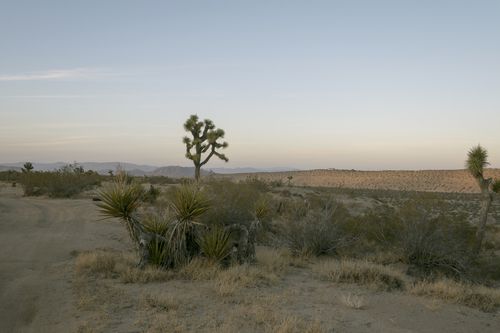
C: It was like meeting other weirdos who would support your project and think it’s cool. That reminded me of driving into New York really late after being on tour for like a really long time. You’d put on WFMU and for some reason, it was always the perfect soundtrack to getting back into the city no matter what day it was. That’s the most magical thing about radio. When you can put it on and it’s serving the vibe perfectly.
E: And that goes back to being reliable and consistent. Having a years-long relationship with it. Like your music taste is always evolving but if you trust this collection of people to hit on your different taste and still know that they’re doing it, it’s a really comforting, grounding thing that you can return to. I hope we can do that. I hope in the future maybe with more support or with more grant opportunities, maybe we can facilitate people’s projects that are sound related that we can host. It’s cool seeing those organizations and radio stations and what they’ve done because it gives us a lot of inspiration.
A: You just had your one year anniversary for Other Desert Radio. What are some things you’ve been proud of?
C: As a direct response to COVID and the protests last summer, every single week we focused on a different nonprofit or mutual aid organization who needed more funding or highlighting than we needed. There were just so many greater priorities than us individually.
E: I’m proud that we prioritized that. Paying attention and spreading information, even if you can’t offer a ton of money, is really big. It’s cool to facilitate these other ways in which a community can get stronger.
A: I think it places it back in the bigger world. Although based somewhere small, it re-connects it with the broader community and so much else of what’s going on where the stakes feel higher.
C: It was a good opportunity for us too to learn about funds that were already set up for things like Black mental health or Desert Communities United or when the wildfires were happening last summer. It was a way to get to address some of those things. That’s part of the radio station now, highlighting different organizations.
E: Ultimately, it’s not work that feels taxing for us, it’s fun, and it feels important.
C: I look forward to it every single weekend and when Monday comes, uploading them and making the posts. At 5pm we’re so excited to listen to all the new shows. I have to walk Beverly at 4:30 that day because I have to be back home to tune in.
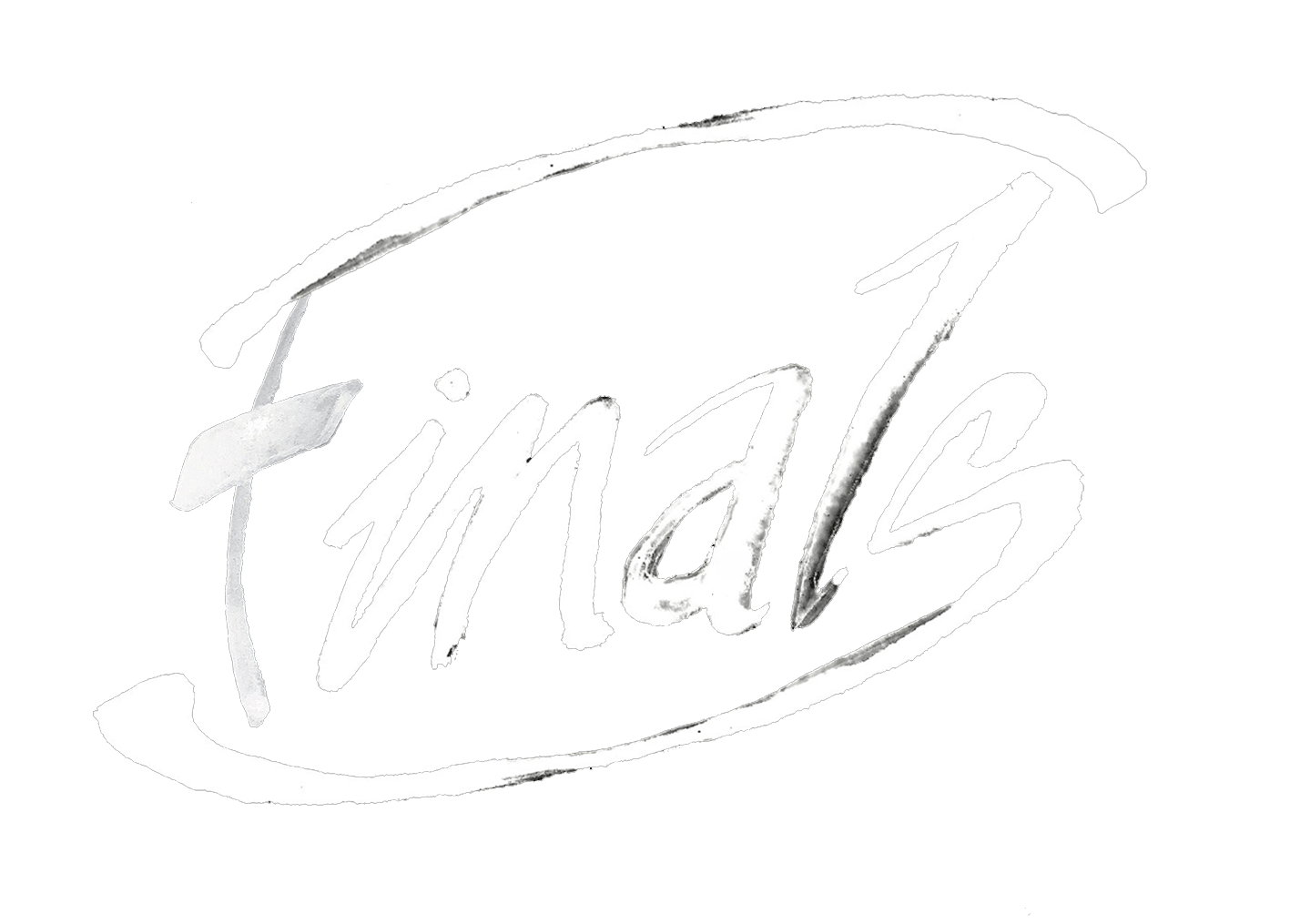
Comments
Leave a Comment